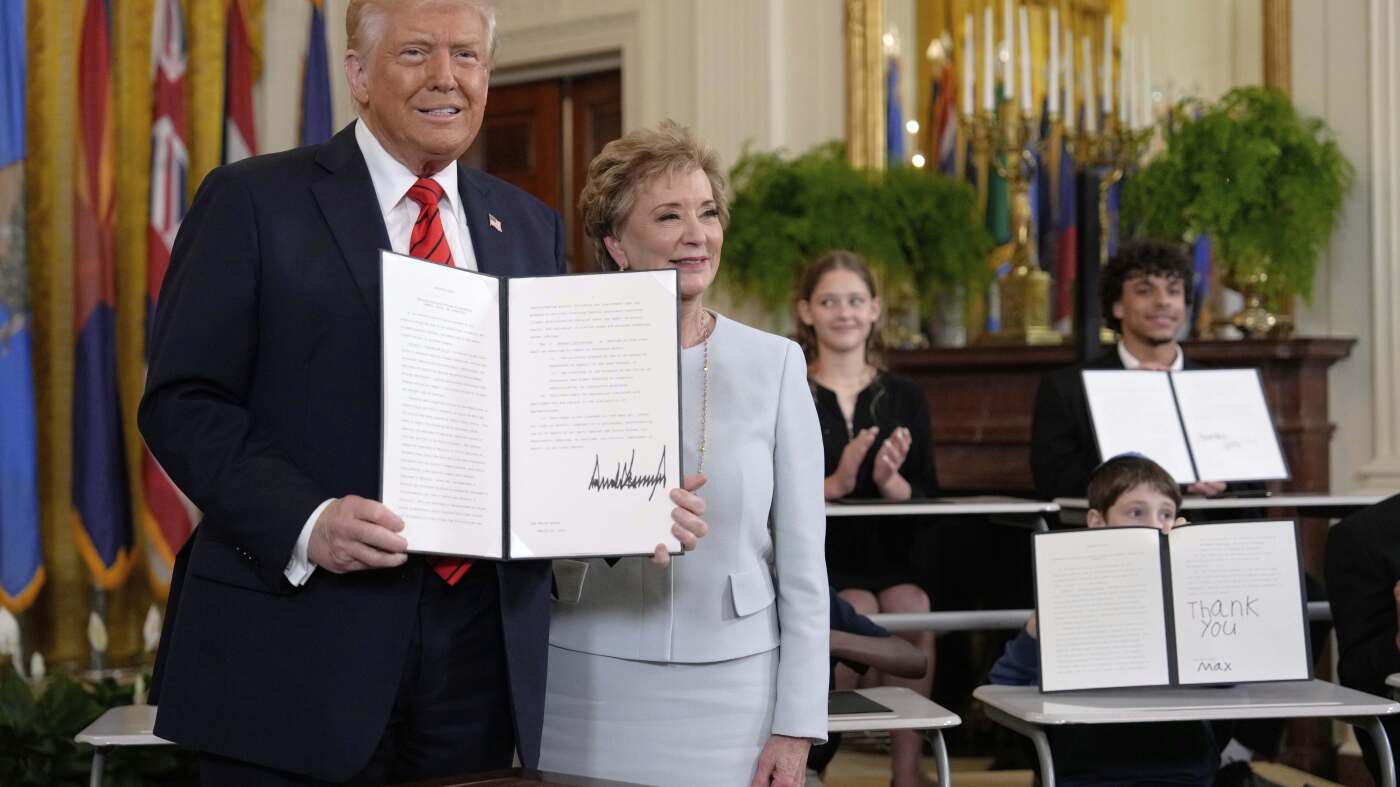Trump’s Initiative to Return Education Control to States Sparks Concerns
In a significant policy move, President Trump has initiated steps to reduce the federal government’s role in education, prompting mixed reactions. This decision, announced with the signing of an executive order, aims to enhance state autonomy over education, but critics warn of potential adverse effects on state education systems and student outcomes.
On Thursday, President Trump signed an executive order instructing U.S. Education Secretary Linda McMahon to begin the process of closing the Department of Education “to the maximum extent appropriate and permitted by law.”
“We want to return our students to the states where just some of the governors here are so happy about this,” Trump stated in the Oval Office, surrounded by Republican governors. “They want education to come back to them, to come back to the states, and they’re going to do a phenomenal job.”
However, Kevin Huffman, former Tennessee Commissioner of Education, cautions that this approach may be misguided. Huffman, now leading the nonprofit Accelerate which advocates for increased tutoring in schools, emphasized that this shift could lead to confusion within state education agencies.
Federal vs. State Control in Education
Huffman argues that the administration’s rationale is flawed, suggesting it relies on the “false premise that somehow federal bureaucracy is the barrier and the reason why kids aren’t learning more.” He points out that states already possess significant autonomy in education policy, with varying degrees of success.
Huffman notes that states have the ability to manage federal funding with a degree of independence, asserting, “States certainly have lots of freedom in defining what their goals are, what their strategies are.”
Potential Complications with Education Department Closure
Despite the proposed closure of the Department of Education, the Trump administration plans to maintain federal funding for key programs like Title I and the Individuals with Disabilities Education Act. However, Huffman suggests that transferring these responsibilities to other federal bodies could create bureaucratic challenges.
“It probably creates more confusion on the ground from states that are used to having a single source that they’re dealing with,” Huffman explained. He emphasized the importance of adhering to established rules to ensure funding reaches the correct students and schools.
Huffman also highlighted misconceptions about federal funding, stating it is not intended to supplement state budgets but to address specific needs for certain student populations.
The Need for a National Education Strategy
Despite acknowledging the drop in reading and math scores, Huffman believes a national plan is essential to address educational challenges. He envisions the Department of Education playing a crucial role in setting goals and sharing best practices from successful states.
However, the Trump administration’s plan to significantly reduce the National Center for Education Statistics’ workforce may hinder these efforts. NPR reports that most of its employees have been placed on leave and will eventually be laid off.
Huffman expressed concern, stating, “I feel like American competitiveness is in the balance,” and criticized the lack of a national strategy as “a bit of a surrender.”






